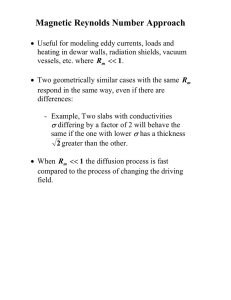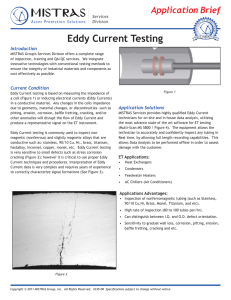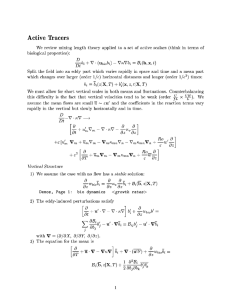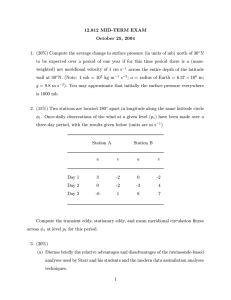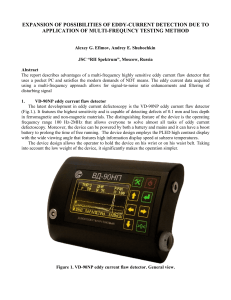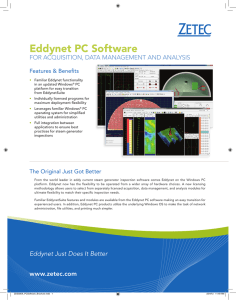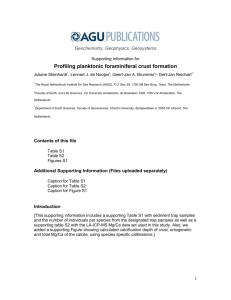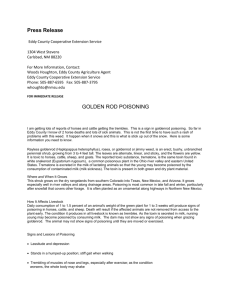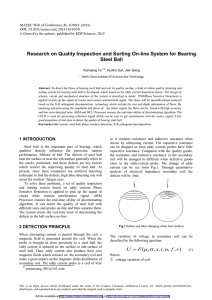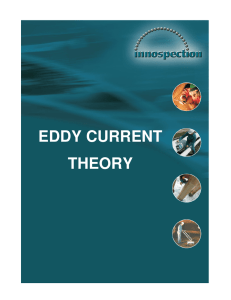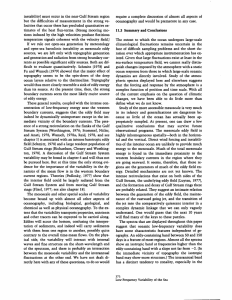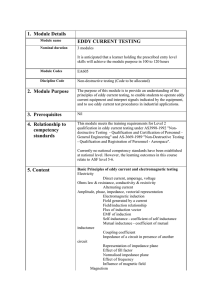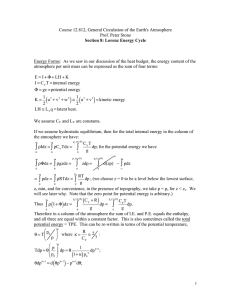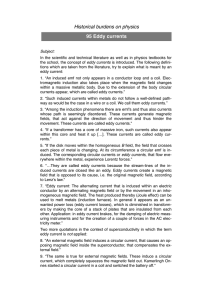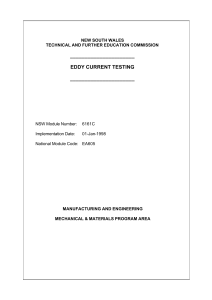Introduction to NDE Eddy Current Systems
advertisement
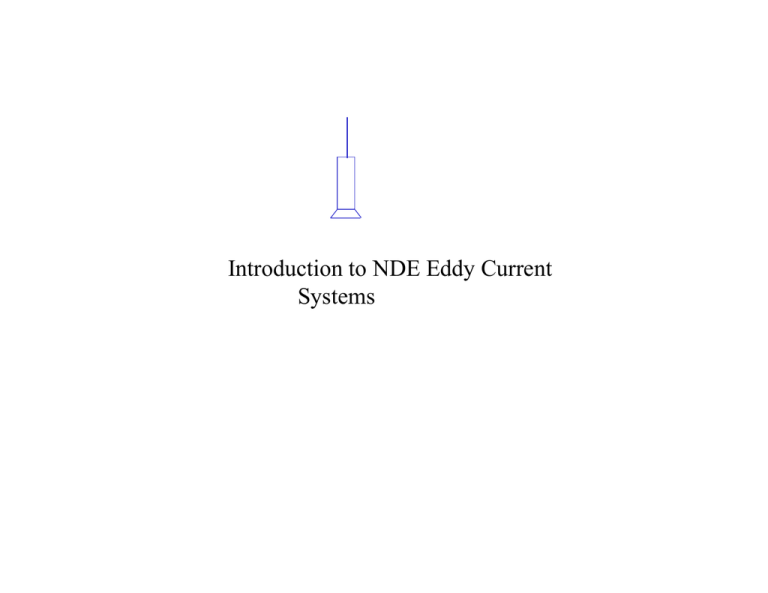
Introduction to NDE Eddy Current Systems Basic Eddy Current Setup alternating voltage, current V I R ~ primary field L liftoff depth of penetration electrically conducting part eddy currents secondary fields Hand-held Eddy Current Probes Tubing Probes Motorized Pancake Coils Some characteristics of eddy current testing non-contacting single-sided access material must be an electrical conductor depth of penetration limited by frequency liftoff variations and edge effects must be compensated for X-rays source film f = 1017 + Hz antenna Microwaves Eddy Currents f = 109 - 1011 Hz induction coil f = 100 - 107 Hz All these methods use a time varying electromagnetic field but because they operate at drastically different frequencies the physics of the interactions is different for each method. Eddyscope XL ω Z R R … resistance XL = ωL… inductive reactance Z = R + i XL complex impedance R,L ED 800 (Magnaflux) 100 Hz - 2.5 MHz NDT-15 (Nortec) 100Hz - 5 MHz EM 4300 (Zetec) 100 Hz - 6 MHz Eddyscope Zetec Miz-27 ET t θ d Variations in liftoff (d), tilt (θ) and geometry changes (edge effects, etc.) can produce significant changes in the measured complex impedance. Thus, these unwanted competing effects must either be compensated for or controlled. |Z|probe ~ 100 ohms |∆Z|flaw ~ 1/10 ohm need a bridge to measure these small impedance changes Eddy scopes contain bridges such a Maxwell's inductance bridge: R2 R1 V ∆V ~ The bridge can be adjusted so that ∆V ∝ ∆Z . Both resistance and inductive reactance changes can be displayed inspection coil Z4 = R4 +i ωL4 L3 R3 test part
